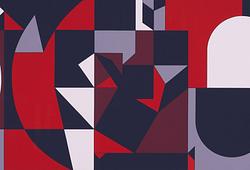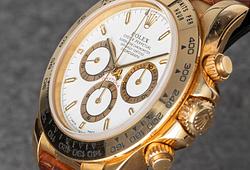August Strindberg
"Inferno" ("The Inferno-painting") oil on canvas 100 cm*70 cm, signed and dated 1901
Executed in the autumn of 1901. Indistinctly signed Aug S-g and dated (19)03. The disparity between the date of execution and the date with which the painting is signed, is explained by the artist's habit of (not always accurately) postdating his works. Oil on canvas 100 x 70 cm.
Tuontiarvonlisävero
Tuontiarvonlisävero (12%) tullaan veloittamaan tämän esineen vasarahinnasta. Lisätietoja saat soittamalla Ruotsin asiakaspalvelumme numeroon +46 8-614 08 00.
Alkuperä - Provenienssi
The artist and (later on) director of Nationalmuseum (National Gallery of Art) Richard Bergh, Stockholm and Storängen, Sweden (by 1909); his deceased estate, Storängen, Sweden; Gummeson Konsthandel (Gummeson Art Gallery), Stockholm (by 1924); Eva Mörner-Dahlstedt, Österåsen, Sweden (purchased from Gummeson); by descent to Helge Dahlstedt, Stockholm; by descent to Fyr Helge Dahlstedt, Lidingö, Sweden; private collection, Stockholm (acquired from the above mentioned); Christie’s, London, “Scandinavian Pictures, Drawings, Prints and Sculpture”, 16 March 1989, lot 382; private collection (acquired at the above sale); Sotheby’s, London, “19th Century European Paintings, Drawings and Watercolours”, 17 June 1992, lot 323; J.E. Safra Collection (acquired at the above sale).
Näyttelyt
Intima Teatern, Stockholm, “Strindbergsutställningen till firandet av Strindbergs 60-årsdag”, 1909; Hallins Konsthandel (Hallin Art Gallery), Stockholm, ”Strindbergs-utställning”, 10 June-31 August 1911, no. 12; Gummesons Konsthall (Gummeson Art Gallery), Stockholm, ”Målningar af August Strindberg”, 8-31 January 1924, no. 31; Nationalmuseum (National Gallery of Art), Stockholm, ”Strindberg som målare och modell”, 21 January-February 1949, no. 47; Örebro Centralbibliotek (Örebro Central Library), Rådhuset (City Hall), Örebro, Sweden, ”Strindberg som målare och modell”, 24 February-March 1949, no. 47; Lunds Universitets Konstmuseum (Lund University Art Museum), Sweden, ”Strindberg som målare och modell”, 20 March-April 1949, no. 47; Musée d’Art Moderne, Paris, ”Les Sources du XXe Siècle – Les Arts en Europe de 1884 à 1914”, 4 November 1960-23 January 1961, no. 693; Kunstverein Ulm, ”August Strindberg. Malereien”, 24 March-25 April 1962, no. 19; Musée National d’Art Moderne, Paris, “August Strindberg. Peinture”, 15 May-10 June 1962, no. 21; Provinciaal Hof, Bruges, “August Strindberg. Schilderijen”, 28 July-2 September 1962, no. 19; British Museum, London, “August Strindberg”, 12 October-? 1962, no. 21; Universitätsmuseum Marburg, “August Strindberg”, November 1962, no. 21; Louisiana, Humlebæk/Copenhagen, “August Strindberg. Malerier”, 7 December 1962-6 January 1963, no. 22; Oslo Kunstforening, “August Strindberg. Malerier”, 19 January-10 February 1963, no. 22; Göteborgs Konstmuseum (Gothenburg Art Museum), “Målningar av August Strindberg”, 16 February-10 March 1963, no. 21; Moderna Museet (Museum of Modern Art), Stockholm, “August Strindberg: målningar”, 15 March-15 April 1963, no. 26; Konstakademien (Royal Academy of Art), Stockholm, “Moderna Museet på Konstakademien”, 1970; Nationalmuseum (National Gallery of Art), Stockholm, “Diktaren som bildkonstnär. Goethe-Hugo-Strindberg”, 1974, no. 192; Munch Museum, Oslo, “Strindberg –maler. En utstilling i Munchmuseet”, December 1976-February 1977; Burgmuseum, Clam, 1978; La Biennale di Venezia, Venice, “Strindberg”, 1980, no. 15; Kunstmuseum Düsseldorf, “Der andere Strindberg”, 25 January-8 March 1981, no. 29; Lenbachhaus, Munich, “Der andere Strindberg”, 18 March-26 April 1981, no. 29; Akademie der Bildenden Künste, Berlin, “Der andere Strindberg”, 3-24 May 1981, no. 29; Kulturhuset, Stockholm, “Strindberg”, 15 May-4 October 1981; The Hayward Gallery, London, “Dreams of a Summer Night. Scandinavian Paintings at the turn of the Century”, 10 July-5 October 1986, no. 94; Kunstmuseum Düsseldorf, “Im Lichte des Nordens. Skandinavische Malerei um die Jahrhundertwende”, 26 October 1986-1 February 1987, no. 94; Musée du Petit Palais, Paris, “Lumières du Nord. La peinture scandinave 1885-1905”, 21 February-17 May 1987, no. 119; Nasjonalgalleriet (National Gallery of Art), Oslo, “Nordiske stemninger. Nordiskt maleri fra århundreskiftet”, 1987, no. 116; Haus der Kunst, Munich, “Die Gibelungen. Bilder von Liebe, Verrat und Untergang”, 1987-1988, no. 373; Malmö Konsthall (Malmö Art Museum), ”August Strindberg. Underlandet”, 26 December 1989-4 February 1990; Liljevalchs Konsthall (Liljevalch Art Gallery), Stockholm, ”August Strindberg-Carl Kylberg-Max Book”, 10 April-31 May 1992, no. 68; Nationalmuseum (National Gallery of Art), Stockholm, ”August Strindberg – målare och fotograf”, 9 February-13 May 2001, no. 32; Statens Museum for Kunst, Copenhagen, “Strindberg. Maleren og fotografen”, 9 June-16 September 2001; Musée d’Orsay, Paris, “Strindberg. Peintre et photographe”, 15 October 2001-27 January 2002, no. 29; Tate Modern, London, “August Strindberg. Painter, photographer, writer”, 17 February-15 May 2005, no. 65; Bukowskis, Stockholm, “Strindberg/Bukowskis”, May 2012; Musée Cantonal des Beaux-Arts Lausanne, "August Strindberg. De la Mer au Cosmos", 14 October 2016-22 January 2017.
During the 1960s and the early 1970s the painting was on permanent loan to Moderna Museet (Museum of Modern Art), Stockholm.
Kirjallisuus
Gunnel Sylvan, ‘August Strindberg som målare’, article in ‘Dikt och Konst. Tidskrift för Konstvetenskap’, 1948, pp. 63-125; Göran Söderström, ”Strindbergs måleri”, 1972, catalogued p. 347, no. 81, illustrated full page in colour, pl. XI, mentioned pp. 17, 186, 202, 211, 220 and 240; Göran Söderström, ”Strindberg och bildkonsten”, 1972, pp. 340-341; ”Diktaren som bildkonstnär. Goethe-Hugo-Strindberg”, exhibition catalogue, Nationalmuseum (National Gallery of Art), Stockholm, 1974, illustrated full page, p. 110; Göran Söderström, ‘Strindberg dipinge/Strindberg as a painter’, article in ‘Immagini dal pianeta Strindberg’, La Biennale, Venice, 1980, illustrated p. 107; Göran Söderström, “Der andere Strindberg, Materialen zu Malerei, Photographie und Theaterpraxis”, 1981, pp. 190 and 245, illustrated in colour, pl. 69; Göran Söderström, ’Målaren Strindberg’, article in exhibition catalogue, Stockholm, 1981, p. 132, illustrated p. 133; ”Im Lichte des Nordens. Skandinavische Malerei um die Jahrhundertwende”, exhibition catalogue, Düsseldorf, 1986/1987, p. 270, illustrated full page in colour, p. 271; “Lumières du Nord. La peinture scandinave 1885-1905”, exhibition catalogue, Paris, 1987, p. 328, illustrated full page in colour, p. 329; auction catalogue, Christie’s, London, 1989, illustrated full page in colour on the front cover; “August Strindberg. Underlandet”, exhibition catalogue, Malmö, 1989/1990, p. 146, illustrated full page in colour, p. 147; Göran Hellström & Carl-Gustaf Petersén, “Det stora konstspelet – Hur 80-talets gyllene konstmarknad förvandlades till trauma på 90-talet”, 1992, mentioned pp. 155-156 and 181; Robert Rosenblum, ’The Paintings of August Strindberg. The Structure of Chaos’, 1995, (text of a lecture given at Centre Julio Gonzalez, Valencia, February 19, 1993), illustrated in colour, p. 13, fig. 7, p. 32; Grischka Petri, “Der Bildprozess bei August Strindberg”, 1999, pp. 127-128, fig. 50; “Strindberg – målaren och fotografen”, exhibition catalogue, Nationalmuseum (National Gallery of Art), Stockholm, 2001, catalogued p. 186, illustrated full page in colour, p. 72; “Strindberg. Painter and Photographer”, exhibition catalogue, 2001, catalogued p. 186, illustrated full page in colour, p. 72; “Strindberg. Peintre et Photographe”, exhibition catalogue, Paris 2001/2002, illustrated full page in colour, p. 72; Olle Granath, “August Strindberg. Painter, photographer, writer”, exhibition catalogue, London, 2005, mentioned pp. 27 and 92, catalogued p. 154, illustrated full page in colour, p. 93; “Strindberg/Bukowskis”, exhibition catalogue, Stockholm, 2012, catalogued and mentioned pp. 56-59, illustrated full page in colour, p. 57.
"Inferno" will also be included in the updated, revised and expanded edition of ”Strindbergs måleri” by Göran Söderström, with planned publication set for autumn 2017.
Muut tiedot
August Strindberg, internationally acclaimed as a pioneer in drama, is nowadays also hailed as one of the most important painters of his time. His work has been pored over by international art historians and he is today recognized as an irrefutable forerunner of abstract Expressionism.
One of the, unquestionably, most exhibited, analyzed and revered Swedish works of art ever was created by August Strindberg in an immediate response to the shattering life crisis he found himself in the middle of at the turn of the 20th century.
When Strindberg paints "Inferno" in Stockholm during the autumn of 1901 he’s in personal turmoil and suffering from bleak despair after the first serious break with his dearly beloved third wife Harriet Bosse who, carrying their unborn child, had recently left him. On 6 September (with reference to the great Dante Alighieri’s masterpiece "Divina Commedia") he writes in his diary:
"Today I painted! For the first time these last years the thought of suicide springs to mind. […] Suicide is a cardinal sin; but Dante finds Cato absolved from Inferno, while he left the world of sin and bondage, since he could see no way of keeping his soul above the filth".
Strindberg’s diary for the days 25-28 September demonstrates how these dark thoughts grew stronger with each passing day:
"Days of terror. The urge to die by one’s own hands increases and will soon be irresistible".
Strindberg referred to these long turbulent days as the “Forty-day inferno”. In the painting he sought to express his overall despair as well as his personal experience of the earthly life being like imprisonment in a dark cellar hoping for an elevated brighter existence in the afterworld. Strindberg himself, in a letter to the painter Richard Bergh in 1909, named the painting his “Inferno-painting”, with reference to Dante’s description of Inferno (Hell) and also quoting the words Dante claimed were written above the gates of Hell: “[Lasciate] Omni speranza voi ch’entrate” (“Abandon all hope, ye who enter here”)….
"Inferno" was Strindberg’s favourite painting and it remained in his possession longer than any other of his paintings. It hung over his desk in the study in Karlavägen, Stockholm where it is depicted in the background of Richard Bergh’s celebrated portrait of Strindberg, which was painted in Strindberg’s home in 1905. It is therefore no surprise that by 1909 "Inferno" was in the possession of the artist (and future director of Nationalmuseum, Stockholm) Richard Bergh, most probably as a gift from Strindberg. Bergh was unwilling to part with the painting and after the exhibition of Strindberg’s paintings at Intima Teatern in Stockholm 1909, to which it had been lent by Bergh, the latter had difficulties retrieving it. In a letter of 9 June 1909, Bergh writes to Strindberg:
"At last the painting is back in my safe-keeping, deep and forceful and a joy to my eyes, for I had started to glance at it every time I feared my use of colour had become too tame. Then I return to my (yours!) painting and with my palette-knife apply more colour and work faster".
"Inferno" still inspires artists and artlovers alike and remains one of Strindberg’s absolutely most written about and exhibited paintings, having drawn numerous visitors to grand exhibitions at prestigious museums like Musée d’Orsay in Paris and Tate Modern in London. On public display for the first time in 1909, during Strindberg’s own lifetime, it has since toured the world to great acclaim and was most recently included in the impressive presentation of Strindberg’s art, "August Strindberg. De la Mer au Cosmos", at the Musée Cantonal des Beaux-Arts in Lausanne 2016-2017.
"Inferno" is without a doubt a superb masterpiece of international standing or, as the author and art historian Göran Söderström (former director of the Strindberg Museum in Stockholm and reigning expert on Strindberg as a painter) puts it:
" ‘Inferno’ is a highly interesting painting for several reasons whose exceptional position is fortified by the emphasis Strindberg himself placed on it as a kind of emotional and spiritual self-portrait".
Please note that on this lot there is a security interest with a Third Party.






































